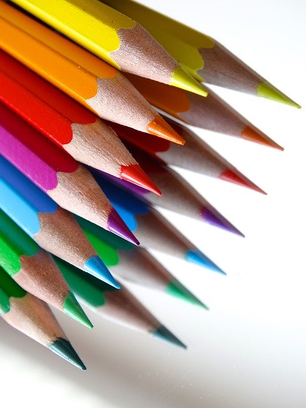People who see music and taste words...  In October 2016 I discovered I have synaesthesia, which came as a surprise! It seems that many people, myself included, don't realise that they view the world differently. What is synaesthesia, you may be wondering? It’s when the senses cross over, meaning one type of stimulation evokes the sensation of another. For example, hearing a sound may result in a synaesthete seeing that sound in colour; musicians such as Billy Joel and Mary J. Blige visualise music this way. Synaethesthia can combine any of the senses, although the most common types are the ones I have, when letters, numbers and time assume colours and shapes. I find some of the rarer forms, such as lexical-gustatory synaesthesia, in which people taste words, fascinating! As a foodie, I’m quite envious of that one, but studies show only 0.2% of people have lexical-gustatory synaesthesia. To help non-synaesthetes understand, to some extent we all do this anyway. Have you ever talked about warm colours or complained that the weather is bitterly cold? Then you’ll have some idea of what I mean. Think about smell and taste; those senses are linked for almost everyone, meaning we can predict how a food will taste from sniffing it. Synaesthesia takes this process a step further. It’s a shame some of the articles I read referred to it as an affliction or medical condition. To me, that smacks of the prejudice that existed decades ago against left-handed people, and isn’t helpful. August is such an orange month... There are two main forms of synaesthesia – projective and associative. People with the former type actually see the shapes and colours projected into their vision, whereas others, like me, have the associative type – we see the results in our mind’s eye, not in reality. Statistics vary as to how many people are synaesthetes – the most common one indicates that 4.4% of people have it. Some researchers have postulated that everyone is born with synaesthesia, with most people losing the ability early in childhood. Early research linked synaethesia to being left-handed and poor with mathematics, although later studies contradict such findings. As a right-handed ex-accountant, that's definitely not true for me! I came across the condition a while ago, thought "yeah, I have that - doesn't everyone see letters in colour?" and then didn't think any more about it. After all, we don’t tend to ask people what colour their alphabet is, or how they visualise time; I honestly thought everyone must use some sort of mental map to process numbers and years. It was only when I read something about Vladimir Nabokov, who was a synaesthete, that I chanced on a Wikipedia article on the subject. After reading through it, it was obvious to me that I had synaesthesia and that it took several forms, which apparently is common. I took the long and very detailed online test at http://www.synesthete.org/ and the results confirmed my suspicions. Tasting of Flora and the country green... Kandinsky may have been a synaesthete! It appears that synaesthesia may be more prevalent in women than men, and is seven times more likely to occur in artists, musicians and writers. Besides Nabokov, other authors with synaesthesia include Joanne Harris and Orhan Pamuk. In literature, synaesthesia refers to a technique adopted by writers to present fiction so it appeals to more than one sense at a time. Take this quote from Keats’s Ode to a Nightingale: 'Tasting of Flora and the country green, Dance, and Provencal song, and sun burnt mirth!' In this example, music, dance, etc, are described as having taste – very synaesthetic! What about this quote from Julia Glass’s novel 'The Whole World Over'? 'The word would fill her mind for a few minutes with a single color: not an unpleasant sensation but still an intrusion… Patriarch: Brown, she thought, a temple of a word, a shiny red brown, like the surface of a chestnut.' I have to disagree – ‘patriarch’ is definitely lemon-coloured! No two synaesthetes view things in quite the same way, it seems. For me, words take on the colour of their first letter, unless we're talking about weekdays or months, and 'P' is pale yellow. I’m considering ways to use my synaesthesia in my writing, both through my narrative description and as the basis for a novel or series of novels. Now that I’ve discovered I’m a synaesthete, I’m keen to put it to practical use! What about you? Are any of you synaesthetes and if so, what types do you have? Leave a comment and let me know!
1 Comment
|
Categories
All
Subscribe to my blog!
Via Goodreads
|
Join my Special Readers' group and receive a free copy of 'Blackwater Lake'!
|
Privacy policy Website terms and conditions of use
Copyright Maggie James 2018 - current date. All rights reserved.
Copyright Maggie James 2018 - current date. All rights reserved.
 RSS Feed
RSS Feed
